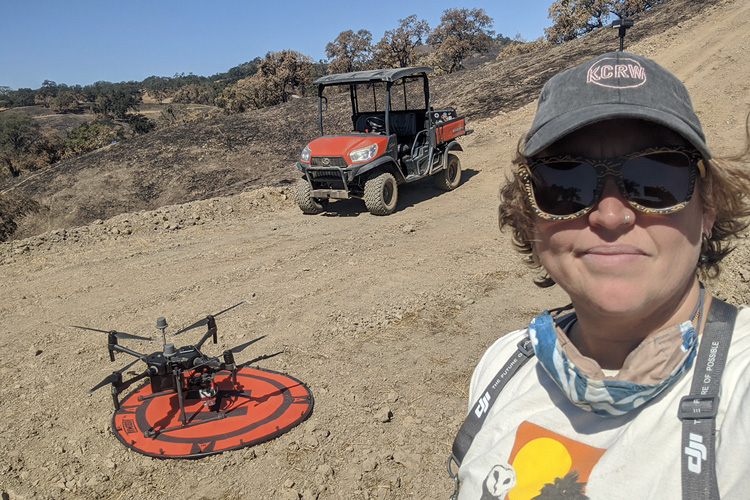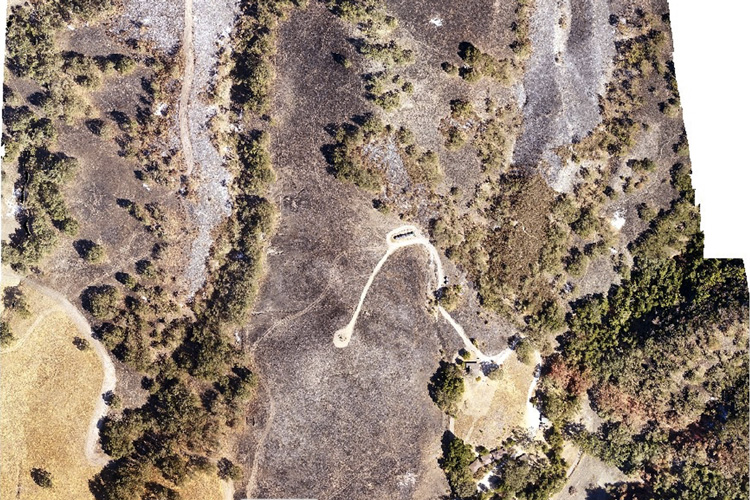Drone surveys reveal fire damage and recovery in UC natural reserves

August wildfires burned tens of thousands of acres in seven UC natural reserves, including a quarter of UC Berkeley’s Hastings Natural History Reservation in Carmel Valley.
Drone surveys of these reserves are now revealing the extent of the damage and providing data that can help scientists understand the long-term and short-term damage caused by fires.
“Although the burns are tragic, in many ways, they present an unparalleled opportunity to understand how California’s ecosystems recover from wildfire,” says Peggy Fiedler, executive director of the UC Natural Reserve System (NRS). “Our teams will gather baseline information that can guide recovery efforts on our reserves and across the West.”
Many of the areas burned are extremely rugged. The capacity to fly drones across hazards such as ravines, cliffs, thick brush and poison oak will enable the scientists to obtain more comprehensive surveys of areas charred by fire.
The surveys, soon to be augmented by ground surveys, could also improve aerial and satellite assessments of fire damage, which don’t always reveal the extent of damage on the ground. Government agencies and land managers rely on burn information to forecast the risk of mudslides and floods after wildfires and potential impacts on drinking water.
The surveys of nine UC Natural Reserves are an expansion of the NRS’s California Heartbeat Initiative (CHI), which deploys a combination of ground sensors and aerial imagery to monitor the effects of climate change on state ecosystems. The post-fire surveys are being funded by a $150,000 grant from the Gordon and Betty Moore Foundation, which supports the initiative.
The Hastings reservation was the site of the team’s first post-wildfire drone study in October, which revealed that large swaths of former grassland are now a uniform, sooty black, indicating they burned at relatively low temperatures. Sections of former chamise chaparral burned much hotter, appearing stippled white. Gray areas burned at somewhat lower temperatures.

The Hasting’s survey was followed by a survey of another Berkeley-operated reserve, Blue Oak Ranch Reserve, where flames scorched an estimated 1,800 of the reserve’s 3,280 acres and weakened or killed many of its signature blue oaks. The CHI team, led by Becca Fenwick, program director, also will survey parts of Point Reyes National Seashore, where thousands of acres burned near the Berkeley-managed Point Reyes Field Station, which escaped damage.
Future researchers will be able to use the information to understand how different ecosystems recover from flames that move across that landscape at different rates and intensities. The plots established for the study can be used as a teaching tool for future classes, where students can further the research and practice field skills.
“The intensity and frequency of wildfires is skyrocketing with climate change. That means these assessments will be relevant to an ever-increasing number of scientists, parks and land management agencies,” Fenwick said.
Wildfires spark burn recovery study at 9 UC Natural Reserves
